(Originally published on Medium - re-publishing on my own site after a re-design)
If you work with creative technology or experience design, I’ve got a question for you: What was the last video game you played? ?
If your answer is “Mario, when I was a kid” or a time-killing mobile game, I’ve got great news. The world of video games has matured quite a bit over the last decade, and there’s never been a better time to try out some new games for some fresh inspiration for experience design.
I’ve recently started thinking a lot about how influential I find gaming and video games on my own practice of creative technology as Chief Creative Technologist at Fake Love (an experiential design company owned by the New York Times). In discussions with industry peers, I’ve also found that many don’t always share the perspective that video games can be easily mapped to experience design. It sometimes feels like someone trying to conduct an orchestra when their primary experience with music was playing the recorder in elementary school. I wanted to help bridge that gap and bring to light some of the reasons I find video games a crucial area of study for improving experiential work in both professional work, and personal art+tech practice.
The best experiential work can be entertaining, it can create authentic worlds, guide users, gently encourage interaction, reward exploration, and create emotional connections to help us learn more about own values — and some of the best video games are very much the same.
A problematic perspective I often see is that “Experiential Design” is often written about in a way that frames it as something that is completely new. In reality, experiential design has many precedents in other areas of culture, like centuries of work in theater, particularly immersive theater, and other areas of the performing arts. In many ways, video games are another branch of those practices, and the best ones allow people to be an active participant in experiences that connect you to stories and emotions in very different ways compared to more passive media like television. Additionally, there are a lot of areas where experiential work is improving, but I see a lot of spots where it continues to struggle to provide a solid user experience. These struggles usually involve complicated user flows, lackluster interactions, rigid user journeys, and just a lack of consideration for what really creates meaning for the human experiencing something. In short, the work could use some new perspectives. Video games are such a relevant area of study for new experiential inspiration because they touch many of the same things that professional experience designers and creative technologists have to work with, such as:
- Storytelling and Narrative
- 2D Graphic Design
- 3D Modeling for environmental and character design
- Music and sound design
- Technology, programming and mathematics
- Game design and strategy
- Interaction design and puzzle building
- Voice acting and motion capture of actors
- General project management and production
I also want to be clear — I’m not only talking about the AAA shooter games that dominate the press, or other gaming phenomenons like Minecraft or Candy Crush. Those mainstream games are good in their own ways, and have a lot to teach us as well, but there are a lot of artists and independent studios out there making really wonderful and experimental games. I’m also not advocating for every experience to be gamified. I think it’s valuable to look at games as a framework to compare the best experiential work against and continue to develop a language that can more clearly articulate what we mean when we say: “That was a really good experience.”
So let’s dive into some reasons why I think engaging with video games is crucially relevant to everyone working on innovative experiential design projects.
- You will get some fresh perspectives on the concept of immersion. Experience design loves the word immersion. However, the definition of what immersion really is can be quite slippery. Is it about enveloping someone with overwhelming sensory experiences? Tangible physical interactions? Huge screens that fill your vision (or virtual reality headsets)? Do you need hyperrealistic graphics or something more stylized? Is it more about theater and writing than environment? My favorite games find ways to immerse me in their story via unique interactions, compelling mechanics, beautiful but fitting graphics, and engaging characters. Some games really immerse you in their complex systems where you don’t quite know where the predictable pre-programmed simulation ends, and where the random chance of your own reality begins. Check out this video from the Game Maker’s Toolkit YT channel for more on immersion and gaming.
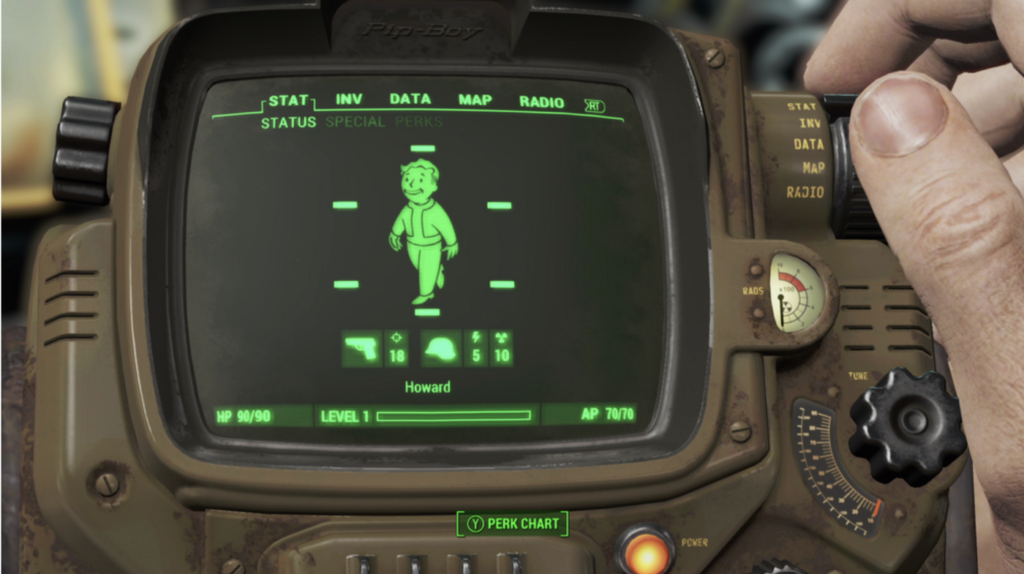
2. You will get inspired by a lot of cutting edge visual and sound design. Web browsing, TV and movies, and smartphone apps expose us to a lot of great UI design, visual effects, and art styles, but video games are in a class of their own. From pixel art to the photorealistic, video games have a range of aesthetics that they employ to create their worlds. Some games find their own unusual style and make it work for them, like the cel shaded charm of Legend of Zelda: Windwaker or the lush and beautiful world of The Witness. Not everything is a race to be hyperrealistic. Viewing these games will give you a palette of references when trying to decide on an aesthetic for the digital components of your experiential piece. You may also get a better sense of what feels “easy” to accomplish for a real-time interactive piece of software versus the more polished look that is achieved in movies. Real-time rendering is improving a lot every year, but knowing the limitations of what is achievable in real-time is an important skill when working quickly in production. Much of what we see with VFX in movies can still take minutes or days per frame to render, as opposed to the 60 frames per second expected of video games and real-time creative technology pieces. The sound design of many games is also a fantastic area to explore for experiential inspiration.
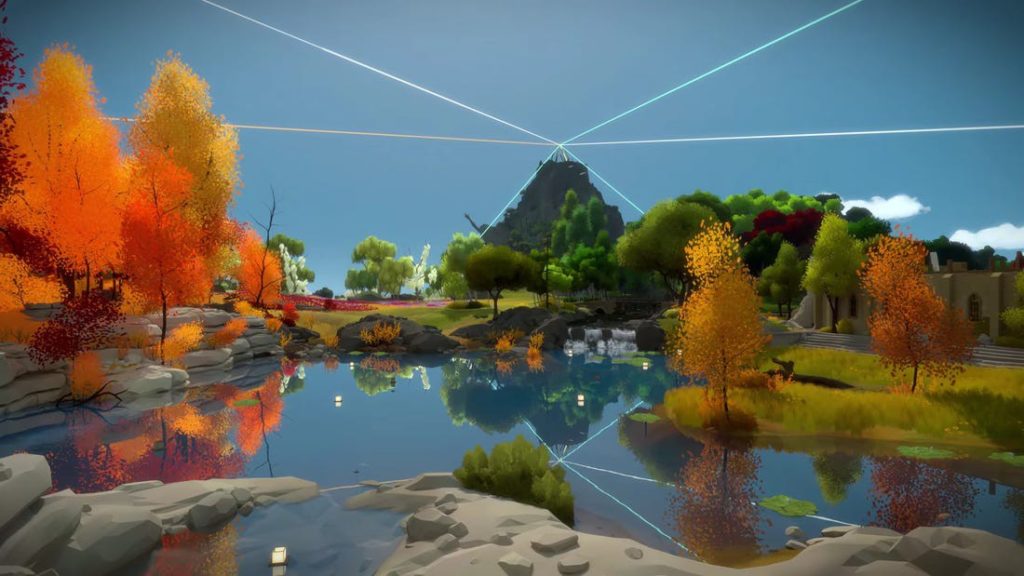
3. You will get a great crash course in effective User Experience Design (UX) and menu design. One pitfall I see over and over on experiential work is when the user journey is drastically overcomplicated. This often manifests as a labyrinthian path through a space, or something as minor as a complex and poorly designed email signup during on-boarding. Complexity and friction is often the enemy of experiential immersion and can easy frustrate a person. The best games often tighten these user experience feedback loops to make the path to complete a task very satisfying and rewarding. Since many games aren’t perfect, I also find myself thinking about what not to do. There are still plenty of games that are terribly inefficient about how to complete repetitive tasks, like moving items around in your game inventory. Recognizing what works and what doesn’t can be a great tool when planning the interactions for an experience. Puzzle design is an especially great tool to inspire you to lead a user to just get what to do versus spelling it out for them.
4. You will be exposed to a wide range of interactions and learn how to guide users with intuitive actions. This is related to the above point. Game designers have the opportunity to be wildly inventive about level design and puzzles they bring to the player. The best games find ways to show and not tell the player what to do — building this trust where the user can work out the solution on their own is a lesson that a lot of experiential work could learn from in order to make their experiences feel less rigid and more immersive. In video games you may be pushing blocks, turning wheels, lighting torches, unlocking areas, finding patterns. Many of these are based on physical interactions that we learn in the real world. There are many games that place you in a room with torches, but block the exit door with some dry leafy material or a spider web. Now with these context clues of fire + leaves = burning, you’ll deduce that you need to use that fire to burn the door open. Many games find new ways of building off these mechanics with very surreal results. The Unfinished Swan allows the player to uncover their world by flinging blobs of paint at an empty canvas that reveals various features. Donut County has you control a hole in the ground to swallow everything in the scene, but you must first capture smaller items so the hole can grow to accommodate larger ones. There are also lot of examples of using physical game controllers in unusual ways that eventually influence experiential work, like the old WiiMote and Microsoft Kinect. Drawing from these as inspirations can help adjust the level of satisfaction and involvement a person has when interacting with an experience. A person can feel more motivated and engaged by an experience if they feel they can overcome a challenge, versus just being told to follow a set path.

5. You’ll learn a lot about non-linear storytelling methods. Most experiential work is non-linear, as opposed to things like books, movies and TV. Many video games are becoming much more open world and have sprawling lore that gets sprinkled throughout the entire game and allows a player to piece together a better picture of the world. Horizon Zero Dawnincorporates snippets of text, audio recordings, and holographic projections from the past to explain what led to its post-apocalpytic landscape. Everybody’s Gone To The Rapture is a game where the entire point is to wander around an idyllic English village and learn the story of why everyone in the village suddenly disappeared and was replaced with floating orbs of light. Life is Strange is a series where you control a teenager with the ability to manipulate time and make tough choices, but much of the authenticity of the world is built out of exploring your environment — looking at notes on the fridge, CD’s in your room, and the contents of the fridge. Firewatch slowly unfolds a mysterious story between you and another character while working the summer as a park ranger in a national park. With experiential work it can be very difficult to guide real people with open ended choices in a real space, but games (and immersive theater) are some of the best places to experience a wide range of what works and what doesn’t with this kind of storytelling. (However, as a counterpoint, some would argue that video games are in a class of their own and are better without stories…)

6. You will learn how to use effective game mechanics to bring people together in cooperative ways. The most memorable and innovative experiential work today isn’t always about immersing your lonesome self in an environment, but about purposefully employing technology and physical elements to help make real connections between people. Involving multiple people in the same experience of play is a really powerful tool for creating memories and connections. There are so many fun multiplayer games out there these days that are either competitive or cooperative. Overcooked is a devilishly designed game that allows 2–4 players to work together in a high pressure kitchen to get dishes served as quickly as possible. It requires people to talk quickly and use effective communication —however, use caution when playing with a significant other :). Keep Talking and Nobody Explodes has multiple players defusing a bomb while another player has the bomb’s manual and reads it aloud — the catch is that both groups can’t see the other’s screen, so players must communicate back and forth. Finding ways to bring multiple people into the same experience in a cooperative way is something that I think a lot of experiences should strive for.
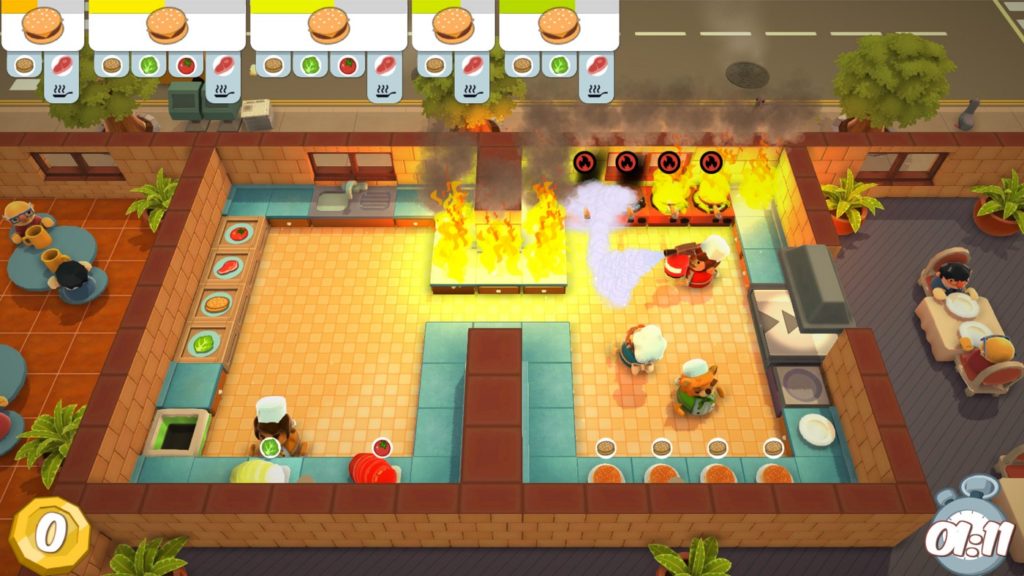
7. Finally, you’ll work more effectively with your creative technology team. So many creative technologists I know are avid game players (both board games and video games). By experiencing more games, you’ll grow your shared vocabulary when commenting on visual design, or inventive physical interactions. You’ll develop a second sense of what the potential and limitations are of real-time visuals, sound design, interaction design, and even interacting with controllers/keyboards/unusual interfaces. Knowing these limits can help you and your team understand the hard time-consuming technology problems, but also find unexplored edges to push against. If you want to accomplish something that hasn’t been done before, then knowing how close other games have solved similar problems before can be a clue about the right path to take.
As I said above, I’m not advocating for every experiential work to be turned into a video game-like experience. I’m saying that you should consider revisiting games if you haven’t lately. They aren’t just toys or for kids — I’ve laughed, cried and certainly gotten angry at many games. I’ve experienced a sense of wonder and awe at uncovering a story and feeling a sense of ownership over my accomplishment at beating a difficult level. I’m also not advocating for more purely digital experiences at all. Tabletop and analog games are also very important to consider — I love and prefer physical interactions over most screen interactions for experiential work, precisely because they tend to be more intuitive and immediate. Many video games have tutorial levels and can take hours to really master their controls and intricacies and people visiting an experience may just have minutes, and this requires a developed sensibility to know what feels easy and hard for a newcomer.
At the end of the day, I think we should be creating better experiences with creative technology that engage humans to find their own way and make meaningful memories. We can do this by giving them intuitive but challenging things to discover. We can do this by having them cooperate or compete for a goal. We can engage their imagination with beautiful worlds and make something new together.
Now having gotten through the above, you may be wondering — where can I start?
To be fair, there are a LOT of games and massively varying levels of quality. Mobile games are probably the most immediately accessible for people with smartphones and no desire to buy a dedicated console or a PC. I also suggest trying a wide range of games to discover your own tastes of what draws you in. Sometimes I’ll just try a game for 10 minutes to see what it’s like — just like trying a song or two on an album. As for game types, there are: twitch games for those that like the adrenaline of using precise timing to navigate challenging levels; narrative-heavy games that have more exploration and cutscenes than fighting enemies; escape-the-room style games that have you solving increasingly difficult puzzles to advance to new areas. Then, of course, there are still first person shooters, platformers, and many other types. As another starting point, I would also recommend looking at the winners from the last few years of the BAFTA awards for video games as there are many really amazing and revolutionary games in their lists.
Below is a list of videos to watch, my personal list of recommended and inspirational games, and a short list of books and articles to read to continue the journey of making some great new experiential work.
I love this video below on how the subtle concept of “Game Feel” can influence so much about how a game is experienced:
Nintendo is probably the best known for really creating groundbreaking and engaging experiences, and this video demonstrates how their unusual approach is crucial to their success:
This video review of the recent release, Death Stranding, is also a great overview of how gameplay and story can come together to create a new kind of social experience about overcoming struggles by connecting people. (Girlfriend Reviews is also one of my favorite youtube channels — hilarious writing and editing):
My video game suggestions:
Console or PC:
- The Legend of Zelda Series — Ocarina of Time, Majora’s Mask, Skyward Sword, Windwaker, Breath of the Wild, Link Between Worlds — such charming stories, memorable characters, satisfying combat and puzzles. This series has it all and Breath of the Wild on the Switch is one of the best games out there.
- Journey — an emotional game where you and a randomly paired remote player climb the treacherous terrain to summit a mountain together with a mysterious end
- Passage — a game where you only travel to the right. Your character ages, gets married, loses their spouse, and dies. It sounds grim, but is actually a beautiful reflection on what it is to be human.
- Stardew Valley — For years I thought this was just another farming simulator, but it is one of the most richly complex and densely layered games I’ve ever played. It was created by one person over many years — the music, the art, the game design, the story. All of these complex systems elements combine to make the world itself feel very much alive. It’s still crazy to me how immersed I get in this one.
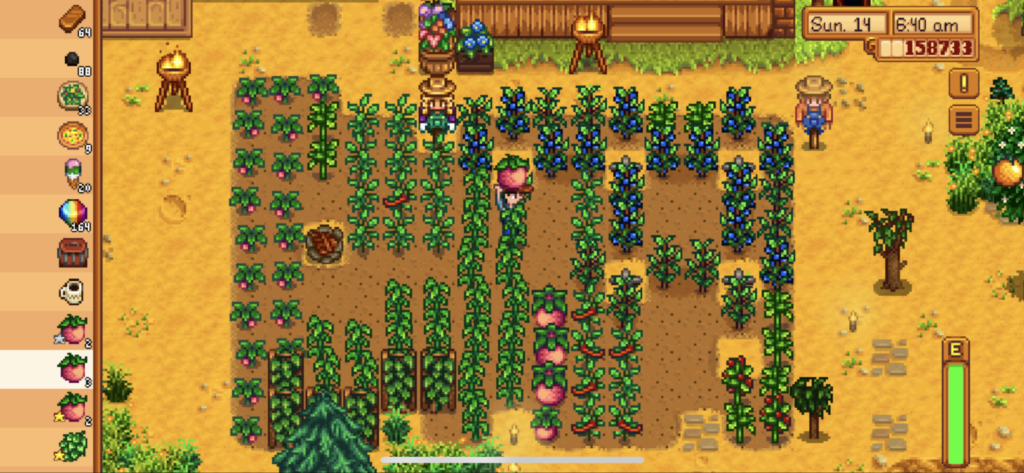
- The Witness — lush visuals, very complex puzzles. This game starts off simple, but quickly veers into some of the most mind-bending puzzles I’ve seen. It all takes place on an island where you are trying to discover who built all these puzzles in the first place — and for what purpose
- The Unfinished Swan — you uncover a blank world by throwing globs of paint. As you move through the world and unlock new painting abilities, you discover the background of the king who created the world and his complicated back story.

- Life Is Strange — You play as Max, a teenager who discovers they can manipulate time. At many points in the story you are presented with hard choices — save yourself or your classmate, be nice to a struggling character or make fun of them. Your decisions have branching ripple effects through the whole story and you are confronted with how your values play out in the broader world. The authenticity of the voice acting and home environments add to this compelling world
- Earthbound — this game was originally on the SNES but remains one of my favorites. It is a story of Ness and how he bands together with a diverse group of friends to help save the world from a time traveling bad guy. The world, character and dialogue is just so unusual and funny — I found myself laughing at a lot of the dialogue even 25 years after it came out.
- Super Mario Odyssey, Galaxy, and Galaxy 2 — Nintendo games and Mario games in particular are still some of the most inventive in terms of gameplay, tight controls, and crazy level design.
- The Last Guardian — You are a boy who pairs up with a mythical beast (who looks like a puppy/griffin hybrid). Both of you traverse a large temple with tall towers to try and escape to the wider world. The creature’s behavior is very realistic to real pets which drives a deeper connection with the creature. Both of you grow closer through the entirety of the game
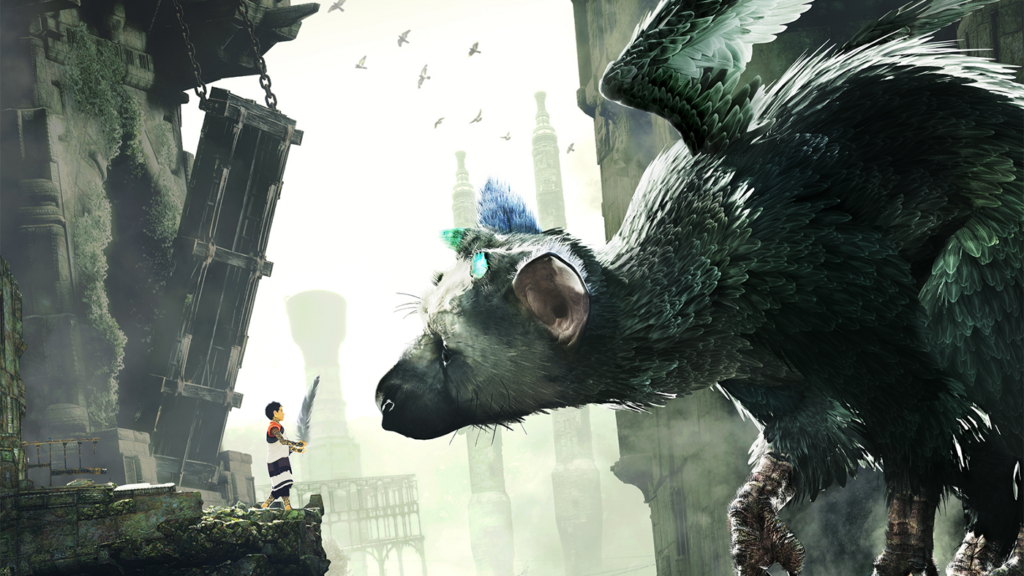
- Untitled Goose Game — you play the role of an asshole goose who can only run, honk and pick things up. You are tasked with annoying the inhabitants of a village is increasingly complex ways.
- Fallout: New Vegas — there are many great Fallout games, but this is my favorite. You are given many choices to pair with different factions throughout the game, and depending on your choices, you face different enemies and ultimately end up at one of 6 endings when you beat the game
- Everybody’s Gone To The Rapture — set in an idyllic British village, this game has you explore and uncover what caused all of the townsfolk to suddenly and mysteriously disappear.
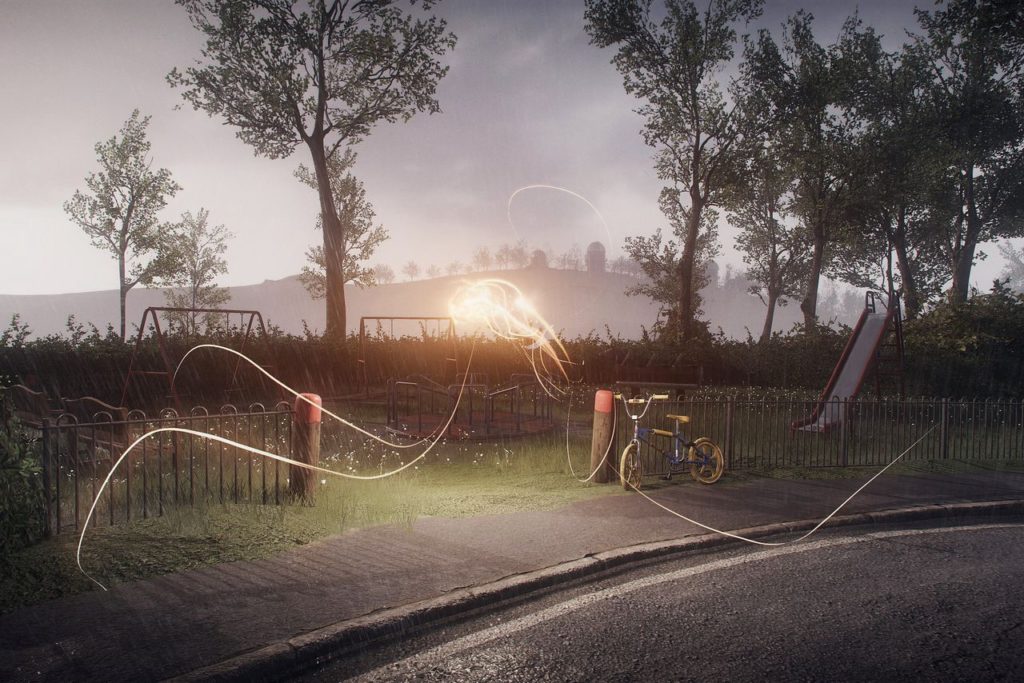
- Bloodborne — oh god, it’s so difficult, but so rewarding when you get it right though…I could have said the Dark Souls series here, but I‘ve learned I prefer a more relaxing game experience and haven’t dug into those.
- Overcooked — a really challenging cooperative multiplayer game where you have to prepare dishes together in a high paced kitchen. If you’re not yelling at eachother in the first 5 minutes, you must have a great relationship.
- Oxenfree — a non-linear narrative game where you try to piece together the story of a mysterious island and your missing friends.
- Undertale — a really one of a kind role playing game where nothing is as it seems. Fantastic writing and memorable characters. You can beat the game and get different endings by never killing anything, or killing everything.
- Celeste — an addictive twitch-based platform about the heroine, Celeste, trying to climb a mountain and simultaneously overcome her anxieties
- What Remains of Edith Finch — a really unusual first-person non-linear story game where you uncover information about a curse that has befallen your character’s family. Great art direction and thoughtful writing
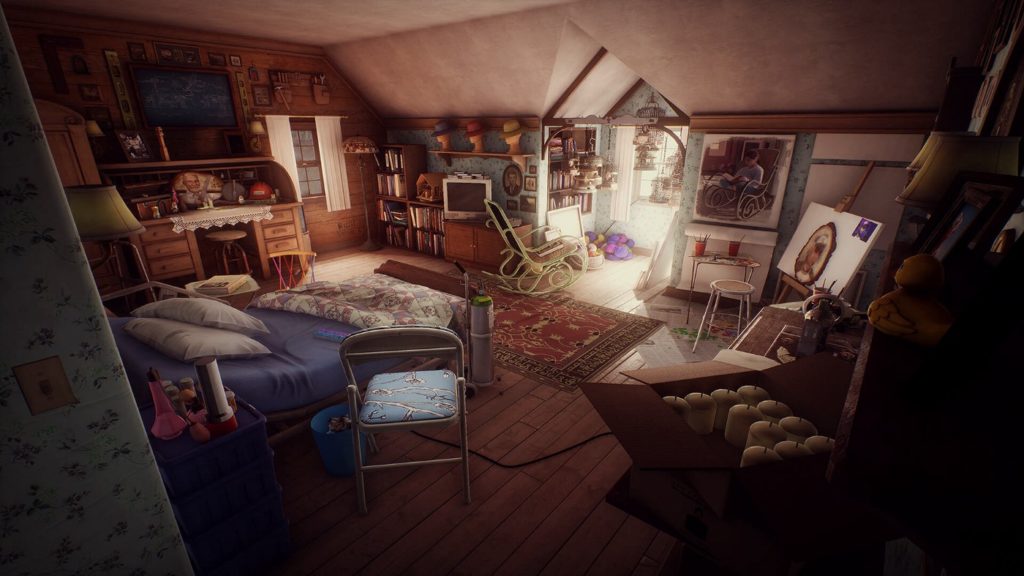
- God Of War (PS4, 2018) — just amazingly satisfying combat that makes you feel powerful. The story is also gut wrenching at times and very well written.
- The Last of Us — on its surface it’s a zombie game, but the relationship between the two main characters becomes the lasting start of the show.
- Horizon Zero Dawn — you’re a badass warrior fighting robotic dinosaurs in a sort of pre-historic/post-apocalyptic environment. I wish this game had a TV show or something because the story and world are so rich and engaging.
- Bioshock & Bioshock Infinite — great world building for alternative timelines to the 1930’s and 1910's, tough moral choices, unusual powers, great stories.
- Firewatch — you are a seasonal forest ranger who starts to experience strange phenomenon in your sector of a national park. Most of the story unfolds in walkie-talkie conversations between you and another character far off in the distance.
Mobile/Tablet:
- Gorogoa — this game has some of the most inventive puzzles I’ve ever seen. I’m not exactly sure how the game designer even did the concepting for how the game would play out. The game is played by sliding or taping tiles of various scenes around and top of each other until they play an animation and progress the story.

- Samorost/Botanicula/Machinarium/Pilgrim — all games made by the Czech studio Amanita Design. They feature really unique artwork, surreal situations, and memorable characters and all center around unusual puzzle solving
- Donut County- a super unique game where you control a hole in the ground and solve puzzles by eating various items on screen. The background story, writing and characters are just so incredibly charming
- Pokemon Go — a smash hit from years ago but it quickly lost popularity. I still play almost daily, and the game is so much better than it used to be 🙂
- Ingress —This is a predecessor of Pokemon Go from the same game studio, and it helped create the information used in Pokemon Go’s real world map. Ingress is more like a capture the flag/territory game where two teams, the Enlightened and the Resistance, battle it out to claim real world territory by connecting portals together.
- The Room — it is such a well made escape the room style game with great puzzles and visual design. There are also 4 of them by now, and they are all fantastic

- A Dark Room — unrelated to the above. This is a text based adventure/mystery game that starts off very slowly and eventually builds to something much more interesting in indescribable.
- Alto’s Odyssey & Adventure —basically an endless runner game where you’re snowboarding down an infinite mountain. There’s something really relaxing about this game — they really nailed the game feel and balance in this one.
- Monument Valley — a popular platform/puzzle game with really charming design and a touching story.
- Vignettes — Similar to Goragoa, I haven’t playing anything quite like this. You’re rotating and manipulation various objects until you find just the right angle and then they magically turn into another object…and then you continue down that rabbit hole until you have found all of the related objects.

- Spelltower/Typeshift/Ridiculous Fishing — really anything by the game designer Zach Gage is bound to be good
- Super Hexagon — a twitch-based game that relies on fast reflexes and good muscle memory to survive simple but maddening paths through a rapidly moving maze.
- Desert Golfing — a procedurally generated infinite golf course. You just aim and swing and go to the next hole once you’ve solved the course. This is about as minimal as it gets, but I was surprised at how much time I sunk into this one.
- What the Golf? — this is a newer game that isn’t really about golf at all. It that basically attempts every imaginable physics experiment and does it with a sense of humor and inventiveness that had me laughing at almost every new level.
Suggested Books/Readings (Thanks for some of the suggestions, David Larkin and Dan Moore):
- The Art Of Computer Game Design: Reflections Of A Master Game Designer (Published in1984 Out of print but a PDF is here)
- A Theory of Fun by Raph Koster
- Persuasive Games: The Expressive Power of Videogames by Ian Bogost
- Rules of Play: Game Design Fundamentals by Katie Tekinbas and Eric Zimmerman
- Game Feel — A Game Designer’s Guide to Virtual Sensation by Steve Swink
- The Art of Game Design: A Book of Lenses by Jesse Schell
- Paolo Pedercini’s course readings for various experimental game design classes
Blogs:

hey blair!
i was laughing reading your part about sleep no more. we are thinking alike. 🙂 that cross-pollination between immersive theater, video games, and installation design is really strong. hope you are doing well and your next step is just as exciting. —shannon at EMPAC
https://searchforsublime.com/2011/07/03/sleep-no-more-the-ultimate-madlib-a-cabinet-of-curiosities/
[…] In 2012 we took our first big company outing to all see Punchdrunk's Sleep No More together. Punchdrunk's immersive theater approach was highly influential for us, and Sleep No More was a consistent reference point for the kinds of experiences we sought to create. Many of our pitches were driven by questions like: How could we create a space that gave people the freedom to create their own path through an experience rather than push a prescriptive narrative? How can we use technology to mediate parts of the story? (You can read more of my thoughts on this and how it relates to video games in this post). […]